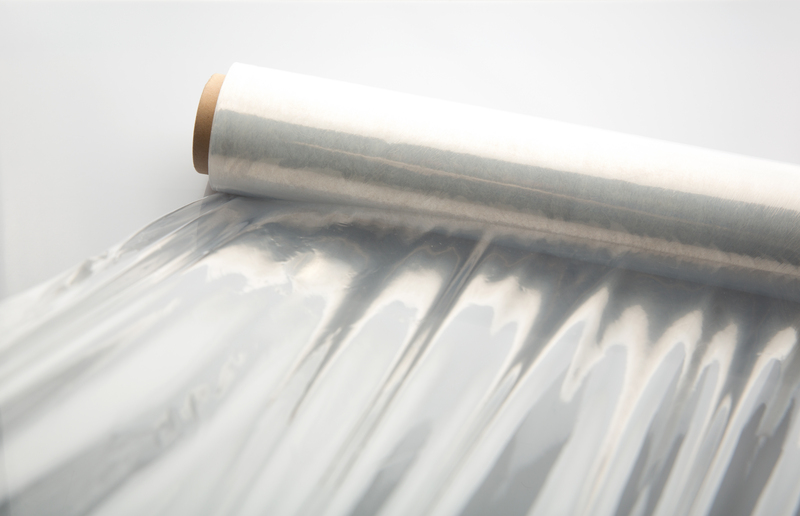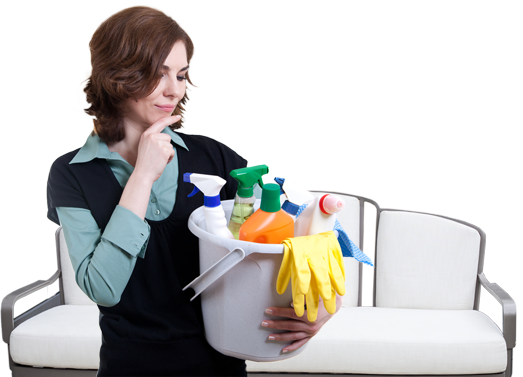Fine Jewellery Cleaning: Techniques That Shine
Posted on 25/08/2025
Fine Jewellery Cleaning: Techniques That Shine
Fine jewellery represents cherished moments, milestones, and memorable gifts that deserve the utmost care. Whether it's a sparkling diamond ring, a treasured pearl necklace, or a vintage gold bracelet, keeping your luxury pieces gleaming is vital to preserving their beauty and value. In this comprehensive guide, you'll discover jewellery cleaning techniques that truly shine--ensuring your collection remains as radiant as the day you received it.

Why Clean Fine Jewellery?
Unlike everyday items, luxury jewellery is exposed to all kinds of elements such as oils, lotions, sweat, dust, and even airborne pollutants. Over time, these contaminants can dull gemstones and tarnish metals, diminishing their signature luster. Regular jewellery maintenance not only enhances your pieces' appearance but also helps prevent long-term damage. By learning the correct jewellery care techniques, you can prolong their lifespan and enjoy wearing them for generations to come.
Understanding the Structure of Fine Jewellery
Before diving into cleaning methods for fine jewellery, it's important to understand the types of materials and settings found in your favourite pieces:
- Precious Metals: Gold, silver, and platinum, each with unique properties.
- Gemstones: Diamonds, sapphires, rubies, emeralds, and semi-precious stones.
- Organic Gems: Pearls and opals are sensitive and require special attention.
- Mountings: Prongs, bezels, and channels hold stones in place, and can trap debris.
Understanding what you have will guide you toward the most effective and safe cleaning techniques for jewellery.
Common Causes of Jewellery Dullness
To effectively restore shine, it's important to recognize the most common culprits behind jewellery dullness:
- Body Oils and Sweat: Natural oils can cling to precious gems and metal, causing a cloudy build-up.
- Cosmetics: Lotions, perfumes, and hairspray often transfer to earrings, necklaces, and rings.
- Household Products: Soap, detergents, and cleaning solutions may cause discoloration or residue.
- Airborne Dust and Pollution: Tiny particles settle onto exposed surfaces, dulling their shine.
Avoiding these triggers altogether can be difficult. However, knowing how to clean and maintain jewellery regularly will minimise their effects.
General Guidelines for Cleaning Fine Jewellery
- Always Use Mild Solutions: Harsh chemicals can damage delicate gemstones and metals.
- Avoid Abrasives: Regular toothbrushes or rough cloths can scratch surfaces.
- Check Settings: Before cleaning, ensure prongs and clasps are secure to prevent stone loss.
- Clean Over a Soft Surface: Lay out a towel or soft mat to prevent accidental drops or damage.
Technique 1: Gentle Soapy Water - The Go-To Method
For most precious metals and hard gemstones, such as diamonds, sapphires, and rubies, the gold standard is cleaning fine jewellery with soapy water. This classic technique is simple, effective, and safe for most everyday pieces.
Steps to Follow:
- Mix about a few drops of mild, non-fragrant dish soap with warm (not hot) water in a small bowl.
- Let your jewellery soak for 15-30 minutes to loosen dirt and oils.
- Use a very soft-bristled brush (such as a baby toothbrush) to gently clean around stones and intricate details.
- Rinse thoroughly in clean, lukewarm water to remove any soapy residue.
- Pat dry with a soft, lint-free cloth. Avoid tissue paper or rough towels that can scratch metal and stones.
Tip: This method is excellent for routine cleaning, but certain delicate or porous gemstones should not be soaked (see below).
Technique 2: Professional Polishing Cloths
Polishing cloths are an easy, mess-free way to maintain the high shine of your gold and silver jewellery. These cloths are typically infused with micro-abrasives and/or anti-tarnish compounds.
- Ideal for gold jewellery cleaning and silver jewellery maintenance.
- Rub gently in one direction to avoid streaks and scratches.
- Wash your hands afterwards -- the compound may be slightly abrasive to the skin.
Do not use silver polish or chemical dips on pieces with gemstones, as these can be too harsh.
Technique 3: Using Ultrasonic Cleaners
Ultrasonic jewellery cleaners deliver professional-level results at home. By using high-frequency sound waves, these devices "shake loose" trapped dirt and debris -- especially from settings and hard-to-reach crevices.
- Suitable for hard stones (diamonds, sapphires, rubies), and some gold/platinum items.
- Never use ultrasonic cleaning on: Organic gems (pearls, opals), some coloured gemstones (emeralds, turquoise, lapis), or antique pieces with fragile settings.
- Always follow manufacturer's instructions and consult your jeweller when in doubt.
While effective, ultrasonic cleaners should be used occasionally and not as a substitute for regular gentle cleaning.
Technique 4: Special Care for Pearls and Opals
Pearls, opals, and other soft organic gems require a tailored approach. Never soak these stones, as they are porous and can absorb water, jeopardising their structural integrity and sheen.
Pearls: Gentle Cleaning Steps
- Wipe after every wear with a soft, damp (almost dry) cloth.
- For periodic cleaning, use a cloth lightly moistened with a solution of lukewarm water and a drop of mild soap. Do not submerge.
- Allow pearls to air dry flat before storing to prevent stretching the silk thread.
Keep pearls away from perfumes, hair spray, and cosmetics, as they can permanently dull their nacre.
Opals & Other Porous Gems: What to Avoid
- No soaking or abrasive cleaning tools.
- No harsh chemicals or commercial dips.
- Store away from dry, hot locations to prevent dehydration and cracking.
Technique 5: DIY At-Home Jewellery Cleaning Solutions
There are several eco-friendly, household alternatives for fine jewellery cleaning at home that are both gentle and effective:
- Baking Soda Paste: For tarnished silver and gold (without gemstones), mix a paste of baking soda and water. Gently rub with a cloth, rinse, and dry.
- White Vinegar Soak: For pure silver items (without stones), a short soak in white vinegar can help remove tarnish. Rinse thoroughly afterwards.
- Club Soda: Submerge diamond or precious stone rings in club soda overnight to boost their sparkle. Rinse and dry afterwards.
Never use household cleaners (bleach, ammonia, or acetone) on jewellery, as they can cause irreparable damage to both metals and stones.
When to Seek Professional Jewellery Cleaning
There are times when home care is not enough. Have your fine jewellery inspected and cleaned by a professional jeweller every six to twelve months--especially if you notice:
- Stones have become loose or are rattling.
- Severe tarnish or discoloration that persists after home cleaning.
- Intricate settings or antique pieces that require specialized attention.
Professional jewellers use ultrasonic, steam, and advanced polishing techniques to restore pieces to their original brilliance and ensure settings remain secure.
How to Store Clean Jewellery for Lasting Shine
Proper storage is as important as cleaning. Once your jewellery is pristine, take these steps:
- Keep Items Separate: Store each piece in a soft pouch or lined box to prevent scratches and tangling.
- Use Anti-Tarnish Strips: Place in silver or gold storage boxes to slow tarnishing.
- Store Away from Sunlight: Excess light can fade gemstones over time and dry out organic gems.
- Maintain Low Humidity: Moisture accelerates tarnishing and can weaken threads on beaded pieces.
Your regular maintenance routine goes hand-in-hand with safe storage to maintain that hallmark gleam.
Bonus: Quick Jewellery Cleaning Tips for Daily Wearers
- Remove Before Activities: Take off rings and bracelets before cleaning, gardening, or exercising to avoid damage and loss.
- Avoid Exposure to Cosmetics: Let lotions and perfumes dry before putting on your jewellery.
- Wipe Regularly: After each wear, give your jewellery a gentle wipe to remove oils and sweat.
These habits not only keep your pieces sparkling but also minimize the need for frequent deep cleaning.

Frequently Asked Questions about Fine Jewellery Cleaning
Is toothpaste safe for cleaning jewellery?
No! Toothpaste is abrasive and can scratch metals and some gemstones. Always use a mild soap and water solution for most at-home cleaning.
How often should I clean my fine jewellery?
For pieces worn frequently, such as engagement rings or favourite earrings, clean every 1-2 weeks using gentle methods. For delicate or heirloom items, limit cleaning to once a month and have a professional perform an annual deep clean.
Is ultrasonic cleaning safe for all jewellery?
Ultrasonic devices should only be used on hard stones and sturdy settings. Opals, pearls, and many coloured gems can crack or become damaged, so always double-check with a jeweller before use.
Can I shower with my fine jewellery on?
It's best not to. Soaps and shampoos leave residues, while hot water can weaken settings and materials over time.
Conclusion: Keeping Your Fine Jewellery Dazzling
Fine jewellery cleaning doesn't have to be daunting. With the right techniques for jewellery care and an understanding of what suits your piece best, every item in your collection can shine with lasting brilliance. Remember to handle with care, clean gently and regularly, and seek professional help for intricate or valuable items. By incorporating these techniques into your routine, your finest adornments will outlast trends and time, dazzling for years to come.
Ready for more jewellery care wisdom? Explore related guides on storage, repair, and preservation to keep your treasures looking their absolute best. For personalised advice or a professional clean, always consult a certified fine jewellery expert.




